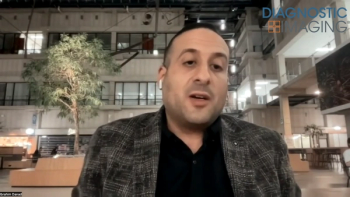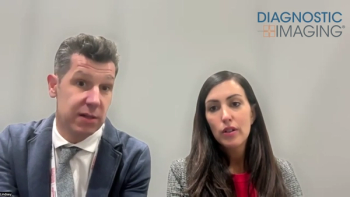
Bicron and Crismatec lay foundationfor growth of solid-state detectors
Saint-Gobain units land gamma camera dealsIf solid-state gamma camera detectors are ever to become a clinicalreality, nuclear medicine vendors will have to reduce the costof the technology to a point where solid-state products are
Saint-Gobain units land gamma camera deals
If solid-state gamma camera detectors are ever to become a clinicalreality, nuclear medicine vendors will have to reduce the costof the technology to a point where solid-state products are commerciallyviable. That's the goal of a pair of agreements announced lastmonth by Bicron and Crismatec, two subsidiaries of French scintillationcrystal developer Saint-Gobain.
Saint-Gobain already has a commanding share of the market foranalog scintillation crystals, but until now had no presence inthe development of solid-state cadmium zinc telluride crystals.That's fine for the time being, as only two companies, GE MedicalSystems of Milwaukee and Digirad of San Diego, have publicly acknowledgedtheir development efforts in solid-state gamma cameras, and neitherfirm has a product shipping (SCAN 7/6/95).
But if solid-state detectors become nuclear medicine's future,Bicron wants to be there to meet the industry's needs, accordingto Mike Mayhugh, director of imaging detector research and developmentfor the Newbury, OH, company, which was purchased by Saint-Gobainin 1990.
Bicron and French sister company Crismatec signed two dealslast month with firms specializing in technologies needed forsolid-state detector development. In the first deal, Crismateccontracted with the French Atomic Energy Commission's LETI (Electronics,Technology and Instrumentation Lab) unit to access LETI's expertisein the electronic circuitry needed to read signals from solid-statedetectors.
In the second deal, Bicron purchased high-pressure cadmiumzinc telluride crystal-growing technology developed by EmmanuilRaskin, founder of RAIS Enterprises in San Diego. Together, theagreements will enable Bicron and Crismatec to explore whethersolid-state detectors can be produced cost-effectively enoughfor the price-sensitive healthcare market.
"If you buy individual (solid-state) detectors today,they are substantially more expensive (than analog-based detectors),"Mayhugh said. "Our primary question at this point is, canthe costs be brought in line to make it useful for the gamma cameramarket and the customers that we serve?" With conventionalanalog detector technology, a gamma photon striking a scintillationcrystal creates a burst of light that is detected by a group ofphotomultiplier tubes, and signals from the PMTs are gatheredto determine the location of the scintillation event and createan image. Solid-state technology differs in that the process ofmaking a burst of light is bypassed, with the detector convertingthe photon directly into an electrical signal, Mayhugh said.
Gamma camera firms believe that this could result in improvementsin energy resolution relative to analog or analog-digital hybridcameras. Solid-state technology may also enable the developmentof lightweight, mobile cameras.
The problem from a cost standpoint is that to acquire accurateinformation about the position of a gamma photon with the solid-stateapproach, a large number of small detectors must be used, eachwith its own amplification circuitry, Mayhugh said.
Perhaps due to the expense in fabricating such detectors, onedeveloper, Digirad, intends to focus on small-field-of-view solid-statecameras, which will be highly portable and will be used for organ-specificimaging.
Despite the promise of solid-state technology, Bicron doesnot believe that cadmium zinc telluride detectors will supplantscintillation-based systems any time soon.
"We don't see this technology as a replacement for scintillationtechnology in any near time frame because of the cost hurdles,"Mayhugh said. "But we certainly want to give our customersthe opportunity to try it out for some adjunct procedures whereit may prove helpful, if the technology can be brought to marketat a reasonable cost. We see it as an opportunity to add to ourexisting product line."
Newsletter
Stay at the forefront of radiology with the Diagnostic Imaging newsletter, delivering the latest news, clinical insights, and imaging advancements for today’s radiologists.


























